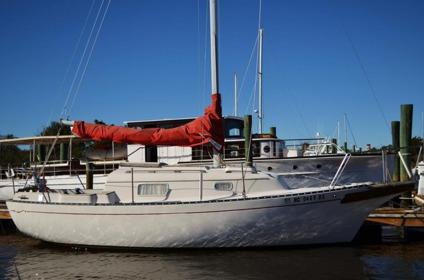...... however the slowing is not noticed because the speed is already limited by the hull shape.
Slowing is always noticed by hull shape and weight. By 'noticed', I am referring to a an actual calculated 'slowing'. You would not be aware of it if you had a more than sufficient engine driving the craft, however, in something like a sailboat which typically has very low power, you will definitely notice the slowing. Get on a small sailboat, say 25', with a friend and go sailing. Then come back with the identical wind and water conditions with 3 friends. You will definitely notice the difference.
As for speed limited by the hull shape, well, that only works on full displacement hulls. A flat bottom, planning hull has no theoretical hull speed. It is limited by the amount of engine power. When a flat bottom boat just plugs along, it is just like a displacement hull. When more power is applied, the boat squats down and goes faster. As it squats and goes faster, the flat bottom is pushing the boat against the water rather than moving through it. This then causes the boat to rise a little. As it rises out of the water, the waterline becomes shorter, and shorter and shorter as you rise into a plane. Have fun calculating the theoretical hull speed on a waterline of one foot or less. The formulas for hull speed are for displacement hulls only.
Anyhow, this Seapiper 34 specs say it has a flat bottom. That gives us somewhat of a planing hull with no theoretical hull speed. A typical 34' displacement hull has a theoretical hull speed of around 7 to 7.5 kts. The specs for the Seapiper 34 says it cruise around 11 kts and max out at about 15 kts. This adds some truth to my statements.
On this particular hull, the skeg/keel will also add a certain amount of drag and restrict it's planning ability but still allow it to act like a planing or semi-planing hull.


 He's playing games. Good catch
He's playing games. Good catch
